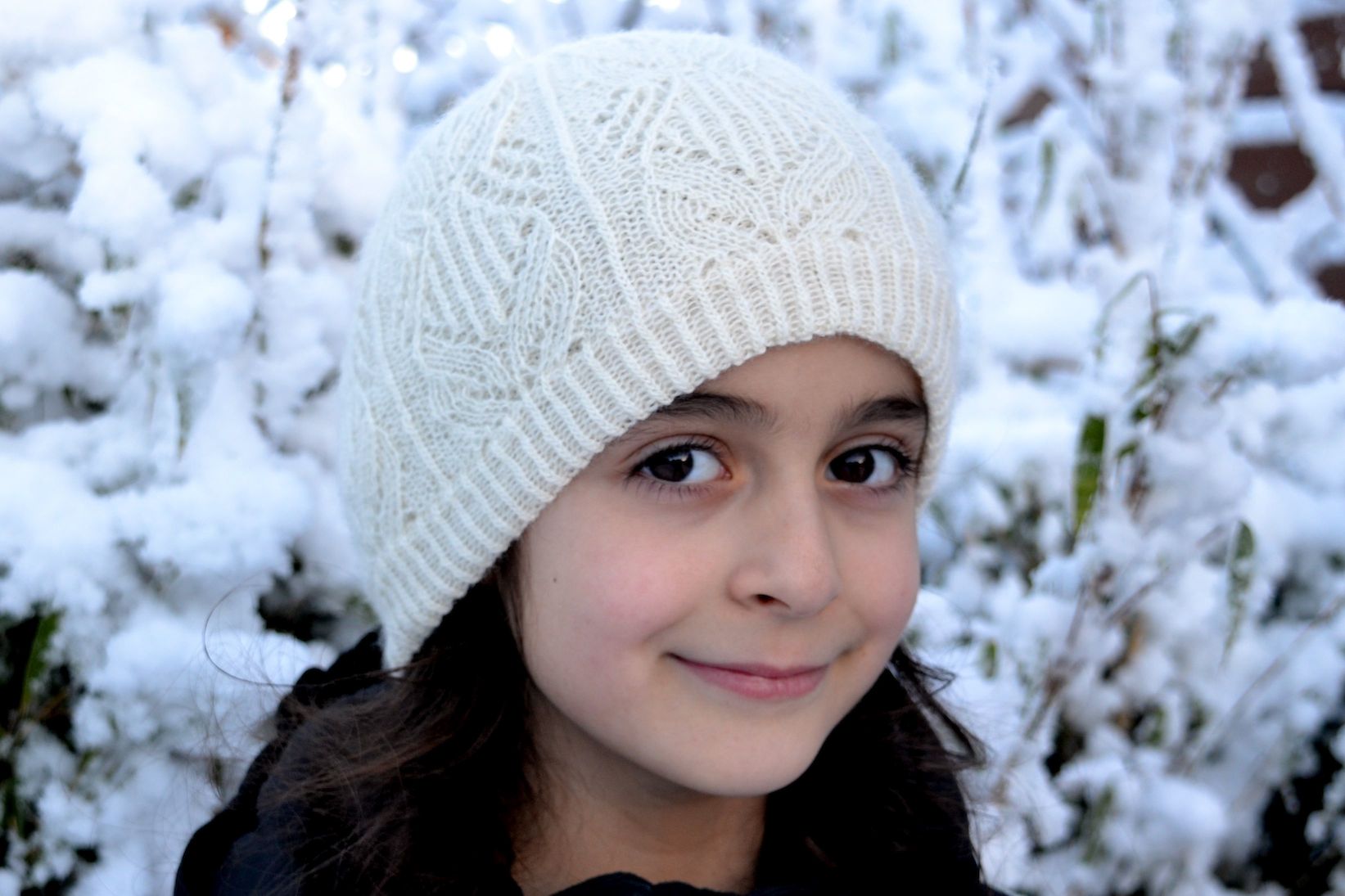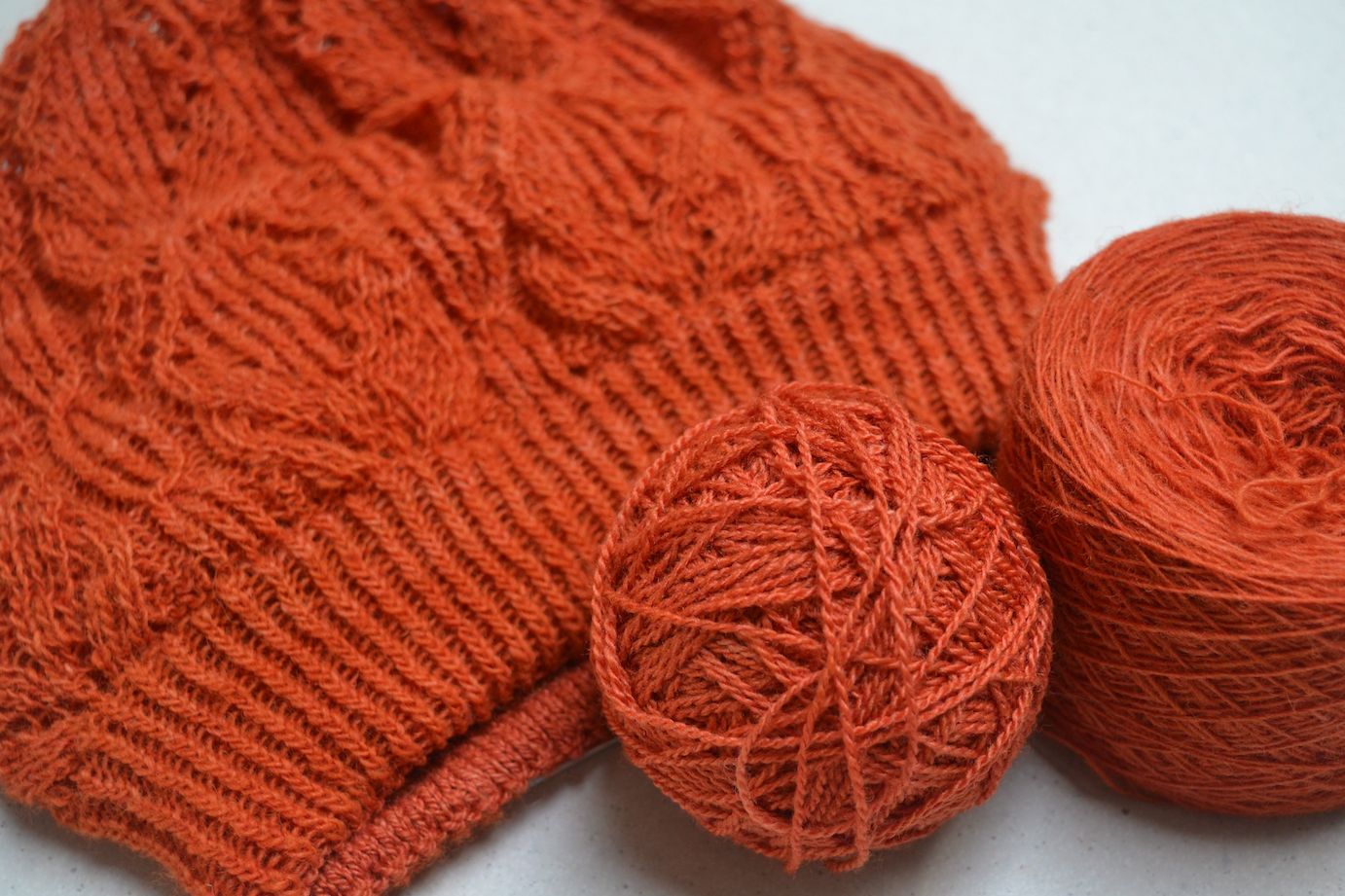What’s the collective noun for hats? “Herd”? “Flock”? “Mob”? “Head”? Or, in my case, “parliament”, or even “pandemonium” may even soon be appropriate. I can’t seem to stop knitting them.
~
I’ve been working on two new designs for hats, a lacy one that leapt out at me from a Japanese pattern dictionary, and one in stranded knitting that came about by swatching. Yes, swatching.
Brisingamen is inspired by a Japanese pattern, and knit in two layers all over. The entire inside is knit in Bestla, a 35/65 mix of silk and merino, the entire outside is Norne, my 1-ply pure wool lace yarn. It took a bit of hard thinking to come up with a way to line both the hem and the rest of the hat – in the end, I went with two provisional cast ons. That may sound incredibly complicated, but it’s really not. And the result really is excellent. Since the gauge is small, the double fabric is thin, but very warm, even when it’s windy.
Here’s Dagmar on a snowy day a while ago, wearing the first prototype, knit in undyed yarn. It turned out too small for me, but fits her just perfectly.

For the final version, I only had to do small recalculations. A triple cable replaces the single line of twisted stitches between motifs, and the rib is longer. Here it is, almost done, in yarn dyed with 1:1 madder. I’ve dyed with madder on pure wool so many times, and still love how it takes the color. Silk merino takes the same dye in a slightly different, no less delicious, way. Perhaps it is the silk sheen that alters the look just slightly.

Folkvang is a tam that was inspired by Bohus patterns. Since I first read about Bohus patterns, I’ve wanted to make something using them as a starting point.
I started swatching to try patterns out. In the beginning, I wanted an arched pattern, so that’s how the swatch starts out (right side). But the arch didn’t behave, and I realized that you would have to work 3 colors in one row to make an arch that separates areas with two different background colors. I hate knitting 3 colors at a time, so I continued the swatch with rectangular shapes.
First, a white rectangle on a blue and green background. It’s OK, but the purl stitches on the long edges don’t add anything. Next, a blue rectangle on beige background. Purl stitches inside the rectangle add texture that makes the pattern more interesting. Now, I was on to something. I changed to white background, kept the dark indigo blue as the contrast color, and added in a bright green band of background color. I was getting close, and was finally happy with the pattern when I let the white background peek into the purled inside of the rectangle, and softened the bright green with a bit of beige.

The vertical lines of blue purl stitches just beg to be lined up with purl stitches of a corrugated ribbing, so that’s what I did:

The hem is lined with silk-merino. The outer part is knit in Fenris, which is excellent for color knitting, but really not that soft.
In order not to break up the corrugated ribbing when progressing from the hem to the main body of the hat, I used a new (I think?) way of closing the hem in color knitting.
In the photo below, you see the corrugated ribbing in front. The provisional cast on is undone, and the live stitches put on a needle, sitting behind the work. Now, holding the yarns appropriately for color knitting (blue is my dominant color, so it’s towards the left because I knit continental), I purl the purl stitch with blue, then knit together 3 white stitches with white, one from the front needle and two from the back. This leaves the purl columns unbroken, very satisfying to the obsessive knitter.

[…] I’ve achieved many clear reds with that method, but sometimes, the color has turned out more orange than red. That’s the case with the yarn for this hat: […]
[…] in the direction of knitting, so motifs don’t have a center that they repeat around. During swatching, I did away with that, settling on a simple square pattern with repeated rounds. The important […]